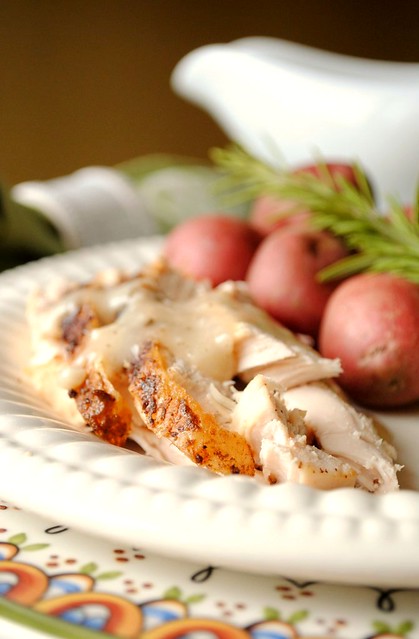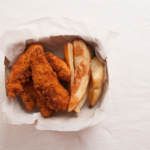The holidays are right around the corner which means that many of us are preparing our gift lists, decorating our homes and preparing menus for the holiday feasts. After the turkey has been carved, the cranberries have been cooked down and the potatoes have been mashed, everyone dives right in and serves themselves helping after heaping helping of the Thanksgiving dishes.
Then it’s time for the dreadful cleanup. If you’re the cook, hopefully this will be the time that you can sit back and relax as you let the ultimate food coma play out its starring role while family and friends take over your kitchen. Before you roll yourself to the couch, it’s important to advise the cleanup crew to save the leftovers. I mean, a turkey sandwich the day after Thanksgiving can’t be beat, am I right or am I right?
A lot of the dishes, since they will most likely be served the following day as leftovers, can easily be sealed in freezer bags or plastic containers and then placed in the refrigerator for safe keeping. However, if you find yourself surrounded by a ton of leftovers, it might be a good idea to freeze the food in order to keep it safe from bacteria so that you can enjoy it in the days ahead.
When it comes to freezing food, you can freeze just about anything. However, some foods simply don’t freeze well. Mayonnaise, cream sauce and lettuce, just to name a few, are foods that don’t particularly freeze well. The following are items that are great to have in your freezer because they freeze well and make last minute weeknight dinners a breeze to put together:
- Cooked Pasta — Cook pasta until barely al dente, drain the pasta (don’t rinse the pasta) and then place in a freezer-ready container.
- Pasta Sauce — Cook a massive batch of pasta sauce and store in containers making sure to leave room at the top of the container for expansion.
- Ripe Bananas — Instead of throwing out ripe bananas, freeze them for use in smoothies and baked goods.
- Pizza Dough — Pizza dough thaws quickly at room temperature so when you prepare dough, cook an extra pie or two, allow to cool and then place in the freezer. The next time you’re craving pizza, simply take the frozen cooked dough out of the freezer, place your favorite toppings on the dough and pop it into the oven.
- Casseroles — Recipes often call for an entire 9×13 baking dish to be filled with the casserole ingredients. Since this makes so much food, freeze the casserole and reheat for quick weeknight meals.
- Soups and Stews — Make a huge batch of soups, stews or chili and dish portions into individual containers. Freeze and reheat in a saucepan for a quick meal that is warm and comforting.
- Cookie Dough — Cookie recipes often make a ton of cookies that might not be consumed in a short period of time. The next time you make cookies, be sure to roll some of the dough into balls and place them in a plastic container. Whenever you crave cookies, just place some of the frozen cookie dough balls on a baking sheet and bake at the proper temperature and time.
Many often wonder about the safety of frozen foods. It’s safe to say that food stored at 0 degrees F will always be safe. The only thing that might suffer is the quality of the food. Freezing preserves foods for extended periods of time because it prevents the growth of microorganisms that cause spoilage and foodborne illness.
If food is kept at 0 degrees F in the freezer, then they can be kept in there indefinitely. The only factor that you have to be careful of is the quality of the food. Some foods, if kept too long in the freezer, will lose quality and make your end result unpleasant. Here is a little list of how long to keep different foods in the freezer to maintain quality*:
- Bacon and sausage — 1 to 2 months
- Casseroles – 2 to 3 months
- Egg whites or egg substitutes — 12 months
- Frozen dinners and entrees — 3 to 4 months
- Gravy, meat or poultry — 2 to 3 months
- Ham, hot dogs and lunch meats — 1 to 2 months
- Meat, uncooked roasts — 4 to 12 months
- Meat, uncooked steads of chops — 4 to 12 months
- Meat, uncooked ground — 3 to 4 months
- Meat, cooked — 2 to 3 months
- Poultry, uncooked whole — 12 months
- Poultry, uncooked parts — 9 months
- Poultry, uncooked giblets — 3 to 4 months
- Poultry, cooked — 4 months
- Soups and stews — 2 to 3 months
- Wild game, uncooked — 8 to 12 months
The following are tips to ensure successful freezing of food:
- Freeze individual portions so that the thawing and cooking process is easier, quicker and more convenient
- Slice bread before placing it in the freezer so that you can thaw individual slices instead of the whole loaf
- Label packages with the name of the items as well as the date of preparation and storage
- Rotate items in the freezer by placing new items in the back of the freezer and old items in the front
The following are tips on how to thaw food safely:
- Overnight — Allowing food to thaw overnight in the refrigerator is often the best way to thaw food.
- Water Immersion — If you don’t have the time to allow food to thaw overnight, place the food in a bag or leave it in the container and immerse the food in cold water.
- Oven — If you’re heating soups or stews, transfer the food to a saucepan and heat slowly, covered, until the mixture is heated through.
- Microwave — Place the food on a microwave-safe dish and defrost uncovered until the food is completely thawed.
- Countertop — NEVER, I repeat, NEVER allow food to thaw on the kitchen counter or outdoors. This is a big no-no because it can leave your food unsafe to eat.
What are some of your helpful freezing tips and tricks?
* Source: USDA







Nice post Jen! Such useful information!
This is such great information! I've always wondered about how long certain things can be frozen before suffering in quality, so I am bookmarking this post for reference. :-)
Great post! Thanks for sharing!
There are so many helpful tips in here. I particularly appreciate the list of safe freezing times for different foods.
Great post!
Some things do better with a light coating of oil on the surface and/or piece of cling wrap inside the container to keep very airtight. One example is pesto. It freezes well and maintains the bright fresh color if you do this.
http://eatlittleeatbig.blogspot.com/2010/09/for-freezer-basil-walnut-pesto.html
Great information. Thanks for the post!
Great tips! Always love these posts… Your site is such a great resource!
Those people who come to the sink and clean up the disaster after?
Please send them to #COMO!
Great reminders of how to – guess I should probably inventory and see what surprises I have forgotten….Hmmm another post another day :")
AmyRuth
Have you ever frozen a cheeseball? I'm not a huge cracker/cheese ball fan but this one is really yummy and would be great for snacking while we're waiting on Thanksgiving dinner ready. Do you have any info on freezing a cheeseball?
Thanks for the great info!! So glad to have found your blog through Kitchen Monki's FB page.
What an awesome guide to freezing food! Thank you for doing all of this research; what a great resource!